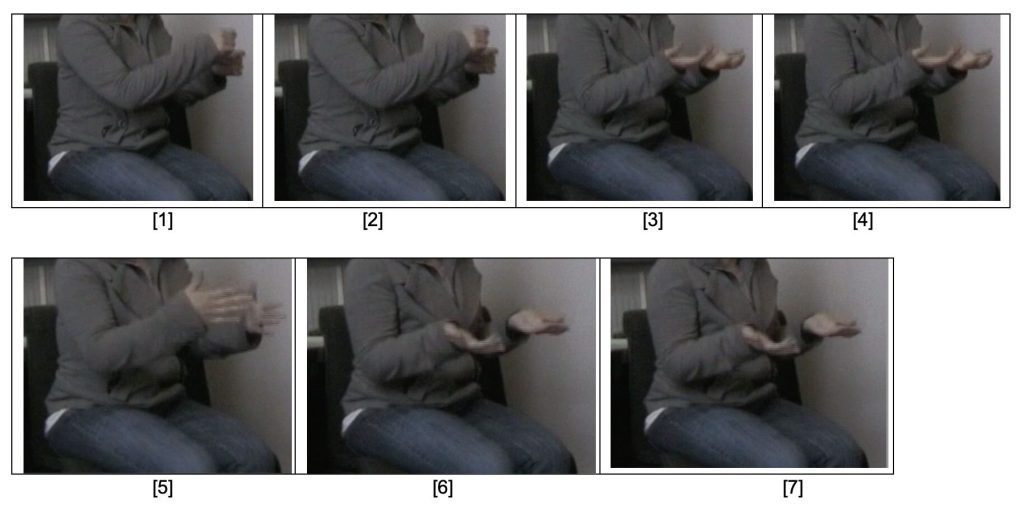Human communication is a multifaceted phenomenon, encompassing not only verbal expression but also nonverbal cues such as gestures. Among various cultures, the use of gestures varies significantly, reflecting distinct communication styles and underlying cultural values. In the realm of storytelling, gestures play a crucial role in augmenting narrative comprehension and engagement. Recent research conducted by scholars at Lund University Humanities Lab delves into the intricate relationship between culture, language, and gestural communication, particularly focusing on the storytelling practices of Italians and Swedes. This article explores the findings of their study, shedding light on how cultural narratives are shaped and conveyed through gestures.
The Significance of Gestures in Communication: Gestures serve as a complementary mode of communication, enhancing the clarity and expressiveness of spoken language. They facilitate the conveyance of abstract concepts, emotional nuances, and spatial relationships, thereby enriching the communicative exchange between individuals. Across different cultures, gestures hold varying degrees of importance, reflecting cultural norms, values, and communicative preferences. Understanding the role of gestures in communication is essential for gaining insights into cultural diversity and intercultural communication dynamics.
Italian and Swedish Cultural Narratives: Italy and Sweden represent two distinct cultural milieus with rich storytelling traditions rooted in their respective histories, languages, and societal norms. Italian culture is renowned for its vibrant expressiveness, characterized by passionate gestures and elaborate verbal expression. In contrast, Swedish culture is often associated with understatement, pragmatism, and a preference for concise communication. These cultural differences manifest not only in spoken language but also in gestural behavior, shaping the way narratives are constructed and conveyed.
The Research Methodology: To investigate the role of gestures in storytelling across cultures, researchers conducted a comparative study involving Italian and Swedish participants. Utilizing a sample of 12 individuals from each culture, participants were asked to retell a narrative based on a 90-second cartoon clip to a friend who had not seen the cartoon. The researchers analyzed the frequency, type, and function of gestures employed by participants, aiming to discern cultural patterns in gestural communication during storytelling.
Findings and Interpretations: Consistent with cultural stereotypes, Italian participants exhibited a higher rate of gesturing compared to their Swedish counterparts. Italians employed a greater number of pragmatic gestures, which served to comment on the narrative and introduce new story elements to the listener. These gestures were characterized by dynamic movements and expressive hand gestures, reflecting the animated nature of Italian storytelling traditions. In contrast, Swedish participants favored representational gestures, which depicted specific actions and events within the narrative with precision and clarity. These gestures tended to be more restrained and focused, aligning with the Swedish cultural preference for simplicity and directness in communication.
Implications and Future Directions: The observed differences in gestural communication between Italians and Swedes underscore the influence of cultural norms and rhetorical styles on narrative production. While Italians emphasize the emotional and interactive aspects of storytelling through expressive gestures, Swedes prioritize clarity and conciseness through precise representational gestures. Further research is needed to explore the underlying mechanisms driving these cultural differences in narrative construction and gestural expression. Additionally, future studies should consider expanding the participant pool and incorporating diverse cultural groups to gain a more comprehensive understanding of cross-cultural variations in storytelling practices.
the study conducted by researchers at Lund University sheds light on the intricate relationship between culture, language, and gestural communication in storytelling. By examining the storytelling practices of Italians and Swedes, the study illuminates the cultural nuances that shape narrative construction and gestural expression. Moving forward, a deeper understanding of these cultural dynamics can enrich intercultural communication efforts and foster appreciation for the diversity of human expression across different cultural contexts. Gestures, far from being mere embellishments, serve as powerful vehicles for conveying cultural narratives and enriching the tapestry of human communication.
